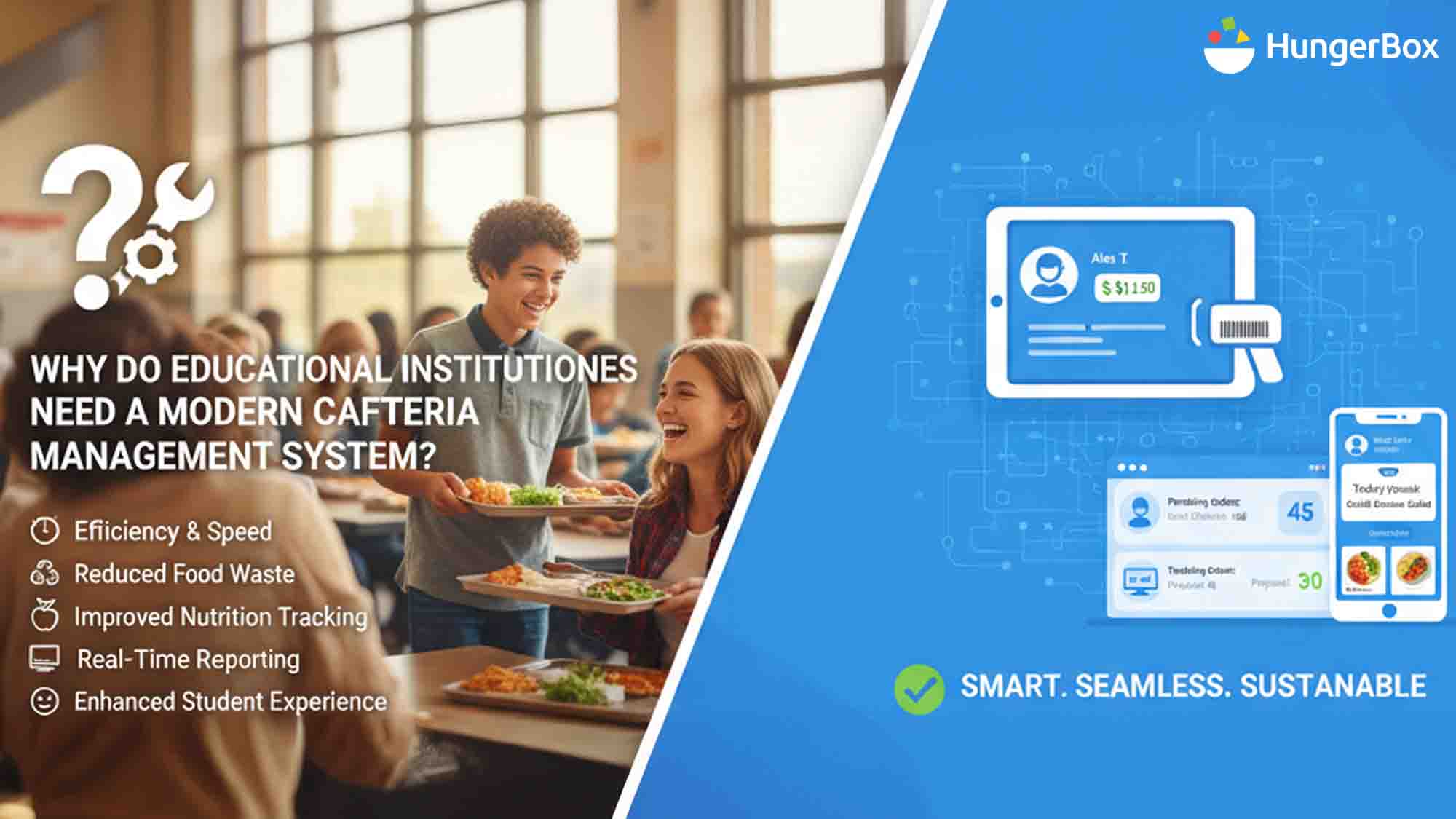
Why Do Educational Institutions Need a Modern Cafeteria Management System?
In today’s fast-paced academic environment, student well-being and campus efficiency go hand in hand. One often overlooked yet essential aspect of this ecosystem is the cafeteria. Modern Educational Institutions Cafeteria Management systems are revolutionizing how schools, colleges, and universities handle food services — making them more hygienic, transparent, and sustainable.
From digital ordering and cashless payments to real-time analytics and waste control, a modern cafeteria management system ensures that the dining experience supports both institutional goals and student health.
Enhancing Student Health and Hygiene
Maintaining hygiene in school cafeterias is critical. Traditional manual systems often lack proper food safety checks and sanitation monitoring. With a smart cafeteria management system, institutions can digitize hygiene protocols, track vendor compliance, and maintain audit-ready reports.
Students can view nutritional information, allergens, and calorie counts directly on digital menus. Automated hygiene checklists and contactless meal delivery help prevent contamination aligning with global food safety standards.
A clean, tech-enabled cafeteria directly contributes to better student health and campus reputation.
Enabling Digital Payments and Seamless Dining
Gone are the days of long queues and cash-based billing. With digital cafeteria systems, students can pre-order meals, pay using campus wallets, or link payments to student ID cards.
This cashless and contactless experience not only speeds up transactions but also improves safety, especially in post-pandemic environments.
Modern solutions also integrate with campus apps, allowing students to view menus, top up balances, or rate meals — all from their smartphones.
Explore our Schedule a Demo page to see how HungerBox simplifies digital cafeteria payments.
Reducing Food Waste Through Smart Planning
Food waste is a major concern in large campuses. Modern cafeteria software uses data analytics and AI-based forecasting to predict meal demand based on attendance, previous consumption, and even seasonal trends.
This ensures precise meal preparation, minimizes surplus, and promotes sustainability. Institutions can also track waste metrics to align with ESG and CSR goals.
Smarter planning not only reduces waste but also saves costs making the cafeteria more sustainable and budget-friendly.
Vendor Management and Transparency
Managing multiple vendors across canteens or hostels can be complex. With a digital platform, administrators gain a single dashboard to track vendor performance, hygiene scores, delivery timelines, and SLA compliance.
This transparency ensures that every meal served meets institutional standards. Automated vendor reports also simplify billing and audit processes reducing manual errors and disputes.
Automation for Efficient Cafeteria Operations
Automation lies at the heart of modern Educational Institutions Cafeteria Management. From menu updates to billing reconciliation, repetitive manual tasks are replaced by digital workflows.
Features such as:
- QR-based ordering
- Smart queue management
- Automated billing
- Pre-scheduled meal pickup
All help cafeterias operate smoothly with minimal human intervention. This allows staff to focus more on quality and service rather than administration.
Data Analytics for Smarter Decision-Making
Data is the new currency of efficiency. A cafeteria management system provides real-time analytics dashboards showing meal preferences, peak timings, and student feedback.
Institutions can use this data to:
- Optimize menus based on popularity
- Monitor food costs
- Forecast demand for exams or events
- Evaluate vendor performance
With insights drawn from analytics, decision-making becomes faster, more accurate, and cost-efficient.
Supporting Sustainability and Eco-Friendly Operations
Today’s educational institutions are committed to sustainability. Digital cafeteria systems support this mission by:
- Eliminating paper receipts through e-billing
- Tracking food waste metrics
- Encouraging reusable cutlery
- Integrating with green vendors
By adopting eco-conscious dining solutions, schools and universities build a stronger, environmentally responsible image among students and parents alike.
Improving Student Engagement and Feedback
Student satisfaction drives cafeteria success. Built-in feedback modules allow students to rate meals instantly and share comments. The system collects these insights in real-time, helping administrators act quickly on issues related to quality, variety, or hygiene.
Over time, this closed-loop feedback system improves food quality, student trust, and overall cafeteria engagement.
Centralized Control Across Multiple Campuses
For universities with multiple branches or hostel cafeterias, centralized control is a huge advantage. Digital platforms allow admins to monitor inventory, menu consistency, and vendor contracts across all locations in one unified dashboard.
This ensures uniform service standards and better cost governance across the institution.
Conclusion
Modern Educational Institutions Cafeteria Management systems are no longer a luxury they’re a necessity. From ensuring hygiene and digital convenience to promoting sustainability and efficiency, technology is redefining how campuses serve their students.
Institutions that embrace cafeteria digitization today are investing not just in better operations but in healthier, happier students and a smarter, more efficient future.
Learn more about HungerBox’s cafeteria transformation solutions on our About Us page or Contact Us to discuss a customized solution for your campus.
Frequestly Asked Questions

It’s a digital platform that automates food service operations on campus from ordering and billing to hygiene tracking and vendor management.

By ensuring contactless service, transparent nutritional details, and automated hygiene checks, it reduces contamination risks and promotes healthier eating habits.

Yes, with integrated payment systems, students can pay via campus wallets, UPI, or linked ID cards, making dining completely cashless and quick.

It uses data analytics to forecast meal demand accurately, ensuring only required quantities are prepared minimizing leftovers and saving costs.

Digital cafeterias offer efficiency, hygiene, transparency, and sustainability aligning food operations with modern campus needs and global best practices.